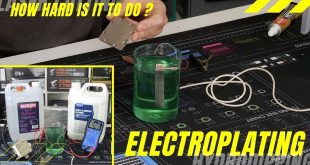As children, we all become fascinated by dinosaurs at some point. For anyone living in the South East corner of the UK, your first memory of seeing the giant Diplodocus in the main hall of the Natural History Museum is a strong one. But in the near future, we could all have houses full of dinosaurs. KitGuru takes a look at a rather interesting application of 3D printing.
While there may be a minority who think Plank's Constant is in fact variable, that light has been slowing down since the dawn of time and that the world we live in is just 6,000 years old – the vast majority accept scientific discoveries like carbon-dating and believe that we're living on a hunk of rock that's orbiting a second generation star – and that we have been making those annual orbits for the best part of almost 5 billion years.
When massive bones began to be discovered by the Chinese almost 2,000 years ago, they were sure it was proof of dragons. In the late 1600s, in the UK, a priest found something that he believed to be the thigh bone of a giant. Over the next 200 years, the church was thrown into confusion as they tried to come to terms with how an animal could become extinct in a universe created by an omnipotent god. Surely god doesn't make mistakes? Surely he wouldn't need more than one try? Why would he let any of his creatures fail?
The questions provoked a lot of debate and – as a world ruled by massive lizards became more and more accepted – children began to dream about dinosaurs.
Right now, the problem for scientists is that they can often discover part of a skeleton in the ground, be certain that there is more around them, but struggle to bring the rest out in a timely and cost-effective way.
Enter modern technology, powerful scanners and 3D printing.
Powered by Autodesk, National Geographic, Stony Brook University, Turkana Basin Institute and the National Musuem of Kenya, African Fossils is a web site being developed to show case fossils online. And it's using a novel approach to the work.
The project is being run by Louise Leakey who believes that “3D printing will be a step change in the science of palaeontology once the costs come down”. Her team uses around 160 photos of an object, scanned in from various angles, to set up a 3D printing job.
The advantages of 3D printing are obvious and incredible. You don't even need to take the fossil out of the ground. It can be scanned by X-rays while still embedded in the rock, the printed without disturbing anything.
If the price of 3D printers comes down enough, you can imagine scientists, school children and dinosaur enthusiasts across the globe ‘printing their own T-Rex'. One piece at a time.
In an interview given to the BBC in 2011, Epson CEO Minoru Usui said, “We think in a few years it will be possible to print on demand in 3D. We have to check the market as well – it's just a development project at the moment. We think it's possible that it may exist in the home one day, but the first step would be business, or the office, or industry”.

KitGuru says: January or not, we've written our letter to Santa and are hoping that Epson et al are ready to step up to the mark by Christmas. No chance for Xmas 2013, but we still hold out hope. Why? Cos ‘Printing your own life-sized dinosaurs' – how cool is that!
Comment below or in the KitGuru forums.
 KitGuru KitGuru.net – Tech News | Hardware News | Hardware Reviews | IOS | Mobile | Gaming | Graphics Cards
KitGuru KitGuru.net – Tech News | Hardware News | Hardware Reviews | IOS | Mobile | Gaming | Graphics Cards


